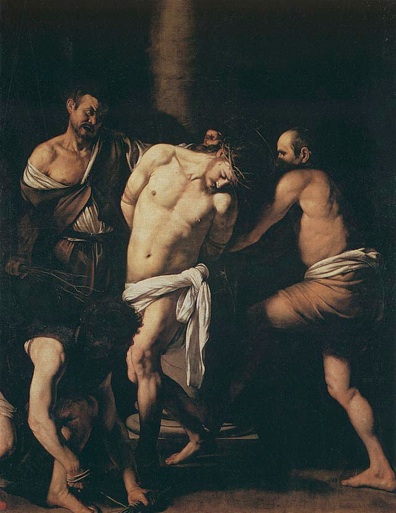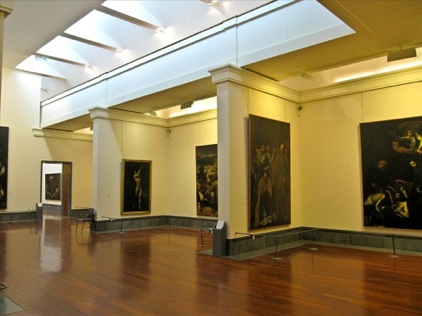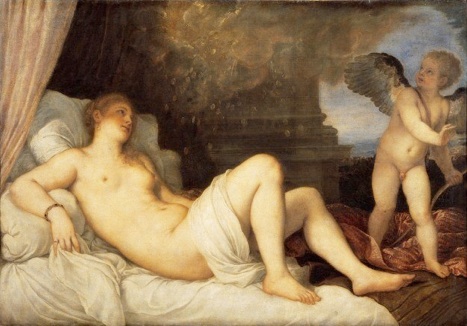Archaeological tours, packages and exclusive multy day excursions in Campania for tourists, lovers,
scholars and students.





Archaeological tours, packages and exclusive multy day excursions in Campania for tourists, lovers,
scholars and students.


The Royal Palace of Capodimonte was built by Carlo III of Borbone, in the vicinity of the wood where the king had decided to build a big enclosure. The works lasted nearly a century, and began in 1738 under the direction of the military engineer Giovanni Antonio Median, aimed from the outset to accommodate the huge collection of art that King Carlo had inherited from his mother Elisabetta Farnese. From 1763 to 1766 the architect Ferdinando Fuga took care to follow the work and were also designed the Royal Porcelain Factory and the church dedicated to San Gennaro. Following the Revolution of 1799, the Palace housed the troops and although Charles was able to bring into their flight to Palermo the finest pieces, many important works were damaged. During the decade of French domination with Giuseppe Bonaparte and Gioacchino Murat, the building became a residential and the works were moved to the Palace of Studies, the current National Archaeological Museum of Naples. Unification of Italy until 1920, when the palace became state property of state, had more residential museum function, despite the artistic sensibility of Savoy family took over, helped to enrich the collection. In 1949 the Ministry of Education imposed a return to the palace of the whole collection of medieval and modern art, previously moved to the Palazzo degli Studi was born in 1957 and the National Gallery of Capodimonte.
daily from 9.00 am to 19.30 (last admission 18.30)
Closed 1th January,1th May and 25th December
Closed on Wednesday
Rates of entry
Full € 7,50 (after 14.00 € 6,50)
Reduced € 3,75 (*)
ArteCard
The rechargeable card to travel and discover the extraordinary cultural heritage of Naples and its region in the easiest and cheapest way possible. Depending on the itinerary chosen, ArteCard guarantees access to the public transport of UNICOCAMPANIA.
Only one free entrance for each one of the listed sites
Itinerary: Archaeology of the Gulf: price € 30.00
validity: 3 days
Sites to visit: Archaeological Museum, Ruins of Pompeii, Herculaneum, Stabiae, Oplontis, Boscoreale Antiquarium, Ruins of Cuma, Baja Castle, Temple of Serapide, Flavio Amphitheatre, Baja Archaeological Park, Rione Terra.
Free
for EU citizens under 18 years
(*) Reduced: for EU citizens aged between 18 and 25 years of age and for school teachers of the European Union.
The free tickets and reduced may be issued only upon presentation of a valid identity document.
A useful service cloakroom is active at the entrances where you can also leave luggage.
For schools visiting the reservation is mandatory.
Sales room
publications, postcards, posters, slides, videotapes and memorabilia are on sale in a room at the museum
Wardrobe
Museum is located at the entrance of a free cloakroom service. It is not allowed access into the Museum with bags, backpacks, umbrellas and bulky items, you can leave these belongings in the cloakroom.
How to arrive
Roads and Transport:
Subways: Line 2, stop: Cavour; Bus C63, 2M, 178;
Car: Highway exit Capodimonte. It is possible to pay to park entrance on Via del Bosco or Miano
The Capodimonte Museum, one of the most prestigious and rich in the panorama of Italian and European museums, is characterized by an articulated path, developed on three floors of the palace.
Tour Price: 65 €/hour (minimum 2 hours)
Tour type: Archaeology and History tour; Private tour; Walking tour.
Duration: 2 hours; 2,5 hours
Running days: Every day (except Wednesday)
Maximum travelers: 14 (a small group guarantee a service of better quality) Tours for larger groups can be arranged on demand.
Main attractions: the masterworks of Caravaggio the “Flagellazione di Cristo”, Simone Martini “San Ludovico di Tolosa”, Tiziano “Paolo III” , Masaccio “Crocifissione”, Luca Giordano “Madonna del baldacchino”...
What’s not included: Entrance ticket (8 €); Transportation (It can be arranged with Mercedes Limousine, Mini Van or Bus; Hotel pick-up or drop-off)
Kid Friendly: Yes

I can arrange an itinerary for people with reduced mobility.
CAPODIMONTE
TOUR DESCRIPTION

INFO
The Museum
The main sections heritage sites within the National Galleries of Capodimonte are the Farnese and Borbone Collection, the largest and most important collection of art of Southern Italy. At the beginning '500, the Pope Paolo III, born Alessandro Farnese (1468-1549), was one of the greatest collectors of art objects and antiques, and when Carlo Bourbon, his descendant of his mother's side, became King of Naples decided to transfer the entire collection in the capital of the new kingdom. It was the largest movement of art around the XVIIth century.
The Museum is spread over three floors, with over 150 rooms containing paintings and objets d'art from the XIII to XX century.
First floor:
-The old apartment with magnificent monumental environments (the Hall of the Cradle, the Ballroom, the Exhibition Camuccini), small and precious environments (the Sitting Porcelain and Pompeian Bedroom)
-The Gallery of Naples and European porcelain, divided by factories;
-The Farnese collection, an extraordinary collection of masterpieces of Italian painting schools dal'400 to 600, including important works by Tiziano (the portraits of the Farnese family and Danae), the Crucifixion by Masaccio, Botticelli, El Greco, Bellini and Brueghel , Parmigianino, Guido Reni, Correggio and the Carracci, drawings by Michelangelo and many others;
-The Borgia collection, with a metal globe in of the XIII century, a work of Mantegna and silk panels of French manufacture;
-The Farnese and Borbone Armory;
-The collection donated by Mario De Ciccio, who had devoted his life to the trade in antiques and had collected between Palermo and Naples very prestigious works of bronze, porcelain, embroidery, silver and objects of great archaeological interest.
Third floor:
- Contemporary Art, opened in 1978 at the behest superintendent Raffaello Causa, in collaboration with gallerist Lucio Amelio, to host a retrospective exhibition of Alberto Burri in Capodimonte . In the years following the third floor was dedicated mostly to contemporary art, and today you can admire works by Mimmo Paladino, Michelangelo Pistoletto, Jannis Kounellis, Domenico Spinosa and note silkscreened image of Vesuvius in eruption of Andy Warhol, made from 'artist on the occasion of his staff in Naples in 1985.
- Photo section, opened in 1996 consisting of approximately 52 photographs by Mimmo Jodice, where the Neapolitan artist compares different generations of artists.
- Gallery of the 800 located in an area reclaimed from the attic of the building, collects works desired by the Borbone in Naples and Savoy more acquisitions. There are works by Michele Cammarano, Vincenzo Gemito e Domenico Morelli.


GALLERY
Second floor:
- The tapestry room, depicting the Battle of Pavia between France and the Germanic Empire to rule over Italy. Dating back to the first half of the 500 were donated in 1531 to Emperor Carlo V by Bruxellex States General;
- The Neapolitan gallery where through the work shows the importance of Naples in the Mediterranean. Alternate subjects of religious themes with strong references to plots lay between art and history, from Anjou to the Bourbons through the succession of works by great artists such as Simone Martini, Mattia Preti, Ribera, Caravaggio, Titian, Luca Giordano and other.
-the Collection of Avalos, donated in 1862 by Alfonso d'Avalos (including the tapestries of the first room) includes paintings by Ribera, Pacecco, De Rosa, Andrea Vaccaro, Luca Giordano, Recco and Brueghel, embroideries, miniatures, prints and weapons;
-That anticipates contemporary art, with the Great Black Cretto of Alberto Burri, the collection third floor.

Copyright © Pompeiin.com - E-mail: info@pompeiin.com
túra tárlatvezetés Pompeii екскурзии на Помпей вођене туре Помпеји visites guiades a Pompeia prohlídky Pompejí vodstva od Pompeja guidede ture i Pompeji opastettuja Pompeijin des visites guidées de Pompéi მართვადი ტურები pompeii ポンペイのガイド付きツアー turais threoraithe Pompeii leiðsögn um Pompei тури на Помпеја guidede turer pompei rondleidingen
شهر پمپی راهنما van Pompeii zwiedzanie Pompei ทัวร์เมืองปอมเปอี visitas guiadas de Pompéia tururi ghidate ale orașului Pompei Экскурсии Помпеи prehliadky Pompejí vodene oglede Pompejev visitas guiadas a Pompeya guidade turer i Pompeji Führungen von Pompeji Pompei'nin rehberli turlar Екскурсії Помпеї tárlatvezetés Pompei 폼페이 투어
udhëzues Pompei - Кіраўніцтва Пампеі - употреба Помпей - guia de Pompeia - Průvodce Pompeje - vodič Pompeji - aktiviteter i Pompeji - juhend Pompei - Guide de Pompéi - treoir Pompeii - fylgja Pompeii - водич Помпеја - gids pompeii - Podręcznik pompeii - guia de Pompéia - Ghidul Pompei - Руководство Помпеи- водич Помпеја - Sprievodca Pompeje - vodnik Pompeji - guía de Pompeya - Guide Pompeii - kılavuz pompeii - Керівництво Помпеї - útikönyv Pompeii - ガイドポンペイ - გიდის pompeii - 가이드 폼페이 (Pompeii) شهر پمپی تور
кіраўніцтва Пампеі - Помпей - guies Pompeia - příruček Pompeje - 指南庞贝 - 指南龐貝 - 가이드 폼페이 (Pompeii) - vodiči Pompeji - guider Pompeji - juhendid Pompei - gabay Pompeii - oppaita Pompeii - guides Pompéi - guías de Pompeia - canllawiau Pompeii - გიდები Pompeii - ガイドポンペイ- गाइड Pompeii - panduan Pompeii - handbækur Pompeii - ceļveži Pompejas - vadovai Pompeii - водичи Помпеја - gwidi Pompeii - guider Pompeii - gidsen Pompeii - راهنمای گر شهر پمپی Prowadnice Pompeii guias de Pompéia ghiduri Pompei Руководства Помпеи
водичи Помпеја príručiek Pompeje Vodila Pompeji guías Pompeya Guider Pompeji ปอมเปอีแนะนำ Führungen Pompeji kılavuzları Pompeii керівництва Помпеї útmutatók Pompeii
Pompeii Tour guide - Herculaneum Tour guide - Pompei and Herculaneum tour - Stabiae Tour guide - Oplontis Tour guide - Naples Tour guide
Amalfi Coast - Sorrento - Positano - Paestum Tour guide - Capua Amphitheater - Procida - Ischia - Capri

BUY NOW THE TOUR OR MAKE A RESERVATION PAYING
A 50 EUR DEPOSIT